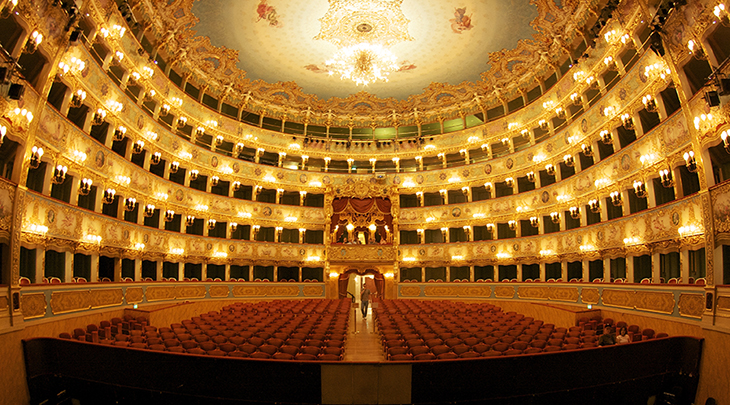Classic Italian Opera Houses Sacrificed Sound For Social Status

Interior of the Teatro La Fenice as seen from the stage
Image rights: CC-BY-SA-3.0
(Inside Science) — In the 17th century, architects across Italy began designing opera houses that paid little attention to acoustics. If a singer couldn't belt "Celeste Aida" to the top tier in Bologna, he could always blame the theater.
But he would get no sympathy.
"You would need to change your profession," said Nicola Prodi, associate professor of engineering at the University of Ferrara, Italy, who reported on the sociology and acoustics of the classic houses in the Journal of the Acoustical Society of America.
If they had wanted to, the Italians could have designed the buildings with a mind for sound -- even theaters in ancient Greece had great acoustics and are still in use. But Prodi said that going to the opera was a social event, and initially that was more important than hearing the show. Most patrons couldn't care less about the music.
Italian opera houses were horseshoe-shaped structures with boxes in tiers on top of each other. The boxes were private property, Prodi said, and owners could rent them out.
The value of a box depended on its position, which indicated the social status of its occupants. The royal box, used by the nobility, had the best acoustics and sight lines to the stage. The closer your box was to the royal box, the better your experience and the more important you appeared to everyone else in the house. Being in a box along the sides or close to the stage was also valued, because people there were on display.
Little attention was paid in the design of opera houses to the balance between the singers onstage and the orchestra, which sat in a pit. The idea of an orchestra pit and the barrier between the pit and the audience goes back to the German composer, Richard Wagner in the mid-19th century, according to Laura Protano-Biggs, a musicologist at the Peabody Institute in Baltimore.
Since Wagner, opera orchestras have been separated from the audience and in the classic design, people in ground-level stalls got an unbalanced sound, with the singers on stage louder than the orchestra, Prodi said. Modern theaters are designed around that problem.
All the way up top, in what the Italians called the loggione, sat people who couldn't afford a box. They had the opposite problem: The orchestra was louder than the singers here unless the singers really belted it out. This happened in part because the sound could reverberate from the ceiling.
If singers wanted to see how well they were being heard, they looked up to the loggione to see the reaction, said Luigi Maffei, of the University of Naples, president of the Acoustical Society of Italy. Here sat the claques, either fans of particular singers whom they came to cheer and jeer, or those paid by the singers to do so.
"In Italy, opera is a blood sport," Prodi said.
For a century and a half, almost every opera house in the world followed the Italian model, including the Royal Opera House in London, rebuilt for the third time in 1857, and Vienna's State Opera, built in 1869 and rebuilt in its original design after World War II, said Protano-Biggs. They remain that way but acoustics are better in both thanks to later tinkering. The designs of the boxes were different, Protano-Biggs said. In the new model, the boxes have a different, "in-line" architecture so the surface is more regular.
The rest of the world eventually moved on, starting in the 19th century. Most modern houses eliminated the boxes altogether. They are also constructed of more sound-absorbing materials. Economics and sociology have modernized the experience in Italy, which has 800 classic opera houses today. But the acoustical profiles remain.
La Scala in Milan — perhaps the most famous opera house of them all — was badly damaged in World War II with only the outer walls standing. The rest of the theater was reconstructed in "a preservationist fashion," said Protano-Biggs. La Fenice, or The Phoenix, in Venice got its name from being burned down in 1836 and rebuilt in the classic design Italians love. It was destroyed and reconstructed again in 1996.
"The acoustics of historical space for opera and music is a cultural heritage which has to be investigated, protected and enhanced," Prodi and his colleague Roberto Pompoli wrote.

